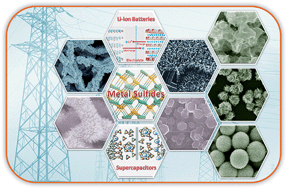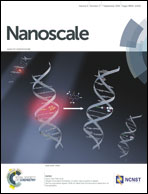Nanostructured metal sulfides for energy storage
Abstract
Advanced electrodes with a high energy density at high power are urgently needed for high-performance energy storage devices, including lithium-ion batteries (LIBs) and supercapacitors (SCs), to fulfil the requirements of future electrochemical power sources for applications such as in hybrid electric/plug-in-hybrid (HEV/PHEV) vehicles. Metal sulfides with unique physical and chemical properties, as well as high specific capacity/capacitance, which are typically multiple times higher than that of the carbon/graphite-based materials, are currently studied as promising electrode materials. However, the implementation of these sulfide electrodes in practical applications is hindered by their inferior rate performance and cycling stability. Nanostructures offering the advantages of high surface-to-volume ratios, favourable transport properties, and high freedom for the volume change upon ion insertion/extraction and other reactions, present an opportunity to build next-generation LIBs and SCs. Thus, the development of novel concepts in material research to achieve new nanostructures paves the way for improved electrochemical performance. Herein, we summarize recent advances in nanostructured metal sulfides, such as iron sulfides, copper sulfides, cobalt sulfides, nickel sulfides, manganese sulfides, molybdenum sulfides, tin sulfides, with zero-, one-, two-, and three-dimensional morphologies for LIB and SC applications. In addition, the recently emerged concept of incorporating conductive matrices, especially graphene, with metal sulfide nanomaterials will also be highlighted. Finally, some remarks are made on the challenges and perspectives for the future development of metal sulfide-based LIB and SC devices.


 Please wait while we load your content...
Please wait while we load your content...